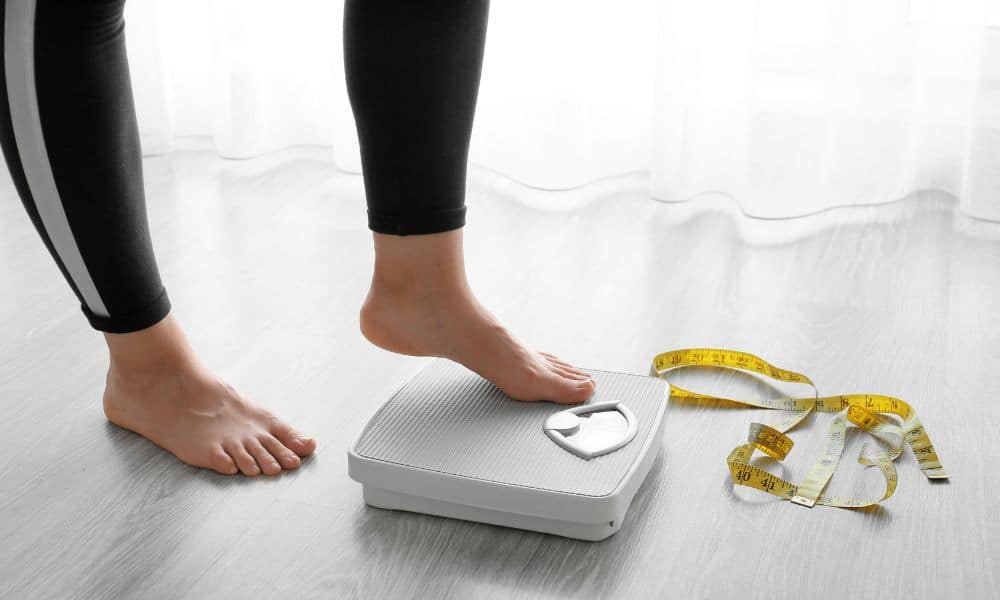Do you know which is better for weight loss – cardio or weightlifting? One thing that many people miss out on is weightlifting for weight loss.
Unfortunately, most people understand cardio is the only genuine option for weight loss. Weightlifting makes you bulky and has nothing to do with slimming down and burning fat, right?
Wrong! Weightlifting can be a potent tool for weight loss, and it might just be the secret weapon in your arsenal.
Read on to find out why this is and what you can do to lose more weight immediately.
How Does Weight Loss Happen?
Weight loss is a scientific process that we can explain with math. You lose weight when you burn more calories than you eat. Your body makes up the calorie deficit by burning fat and turning it into energy. Whenever you work for free or pay, it causes you to burn energy. Thus, everything you do can define as work or a workout.
This is something you may not know. While you sleep, some body parts are busy building and maintaining life. Thus, sleep burns calories, and we can also define it as work. The more you work, the more calories you burn. Therefore, work is equal to weight x distance x time. With cardio, you cover a lot of distance and time, making it the preferred way for many to torch stomach fat.
For example, if a 300-pound man runs 5 miles for sixty minutes, we can say 300 x 5 x 60 = 9000 units of work. In contrast, a 200-pound man can run the exact 5 miles for sixty minutes, producing 200 x 5 x 60 = 6000 units of work. Thus, the 300-pound man will burn more calories than the 200-pound man doing the same amount of work. But what if he lifted weights instead?
Why Is Weightlifting Great for Weight Loss?
The first thing to recognize is that lifting weights is still somewhat aerobic. While you’ll primarily be using the glycogen system for producing power output, you will raise your heartbeat, and if you train for 40 minutes, you’ll often burn 500 or more calories. The average person burns 2,000 calories a day before exercise. This is an extra 25% on top of your daily total! And it’s not that different from running at the same time. Try wearing a fitness tracker and see for yourself!
The next thing to remember is that lifting weights involves the muscles, which often involves lots of them working together in unison. This triggers a hormonal response, specifically releasing testosterone and growth hormone. These increase the metabolism further, burning fat and repairing muscle simultaneously.
Also, having more muscle means your body has to work harder to keep everything running smoothly. Muscle requires energy to maintain, and if you build some biceps and abs, you’ll burn more calories in your sleep.
On top of all of that, weight lifting also helps you tone. This is how you eliminate stretch marks and create the illusion of weight loss. As for getting too big, you really shouldn’t worry about that. No one ever became Arnold Schwarzenegger overnight by accident.
Thinking Outside of the Box, One More Strategy
Want to maximize your results? Then why not combine your weight training and your cardiovascular exercise? This is called resistance cardio, and examples include riding a stationary bike with a high setting or performing rows against a lot of resistance.
The Last Word on Weightlifting for Weight Loss
The key to weight loss is to burn more calories than you eat. Weight loss is a simple process. Weightlifting causes weight loss by causing you to work while working out and maintaining the muscle you build when you are not working out. You should combine cardio, resistance training, and a sensible weight-loss diet.
Finally, be patient with the process. Improve your physical appearance and ability, which leads to long-term weight loss. There are many benefits to building power and endurance. Some benefits include long life, better sex, more productivity, less fatigue, and a better mood. Also, it doesn’t hurt to look and feel great. What has been your experience with weightlifting for weight loss? If you or someone you know is considering weight loss, share this article on Facebook or Twitter so that others can learn more about losing weight.




